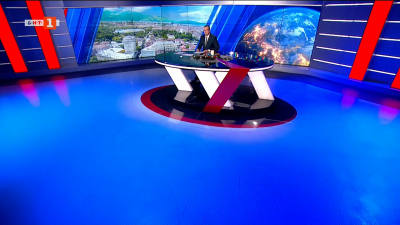BGN 2.2 billion will be allocated by the state for the shutdown of coal-fired power plants

The state will allocate 1.15 billion euros or 2.2 billion BGN to deal with the consequences of the closure of coal plants and the transition to a climate-neutral economy. This is stated in the latest version of the territorial plans published by the Ministry of Energy on 9 August. They are expected to be considered by the Council of Ministers tomorrow.
The plans show what the money will be spent on so that the hardest hit regions can cope after the closure of coal mines and adjacent power stations. According to them, 7.5 gigawatts of new solar and wind-powered renewables will be built in Bulgaria by 2030. The coal-fired thermal power plants will start to gradually reduce work from early next year, when the first contract of the US-based Contour Global Maritsa East 3 plant expires. It is expected to stop work and be used as a possible reserve in case of need. It is not yet clear what funds the company will receive to maintain it as a reserve.
Several starting years are written into the territorial plans. In terms of coal mining, the key year will be 2026. After that, the actual reduction of mining and the reclamation of the land will start.
By 2038, the coal-fired power plants must be closed and switched to another fuel type.
By 2050, Bulgaria's economy must be climate neutral, i.e. the effects of production must not lead to climate change.
The districts most affected by the cessation of coal mining and solid fuel energy production are Stara Zagora, Pernik and Kyustendil. Of these, the most serious effect will be in Stara Zagora, where four of the largest coal-fired power plants are located, as well as the state-owned Maritsa East Mines. According to data from the Ministry of Energy, over 11,000 people are currently employed in this industry in the region. However, these are only those directly affected. There are whole industries around the mines and the tTPPs that work for them.
The aim of the territorial plans is to support enterprises and businesses that will provide employment for these people and at the same time transform the economy from a polluting one to a highly efficient one. The plan contains three main pillars:
PILLAR 1
- Post-mining recultivation (Reclamation) of lignite mining sites;
- Supporting the creation of hydrogen-based value chains;
- Support for the establishment of clean technology industrial parks;
- Support scheme for photovoltaic parks;
- Scheme to support the use of green hydrogen;
- Support for biomethane and wind energy production;
One of the ideas put forward is to build large solar parks on the site of mines. At the same time, the possibility will be sought to switch to another type of fuel. Natural gas has been discussed as an interim.
PILLAR 2
- Skills mapping of the affected workforce;
- Retraining and up-skilling;
- Energy efficiency measures with a focus on fuel poverty;
- Currently, studies show that most of the people working in the mines have low skills that are specialized in technical activities. It is very difficult for such workers to find employment in a different sector.
PILLAR 3
Diversifying the local economy
- Diversification and adaptation of the local economy;
- Support for research and innovation for enterprises;
- The aim of this pillar is to allocate money to develop new businesses in areas other than energy.
At the same time, funds will be allocated for technical support under the so-called horizontal pillar. Support will be provided by the state through the ministries of regional development, energy and labour and social policy.
The establishment of a new state-owned company "Conversion of Coal Regions" is also envisaged. It will deal with the reclamation of post-coal mining sites and the creation of the necessary new infrastructure.
Although the territorial plans are expected to be approved tomorrow and sent to Brussels, they have not yet met with the full support of the local authorities and the trade unions. It also remains questionable how spatial plans are being written without an energy strategy that sets out exactly how and when the transition to a low-carbon economy will take place. The plans mention several times that new nuclear capacity will be built, as well as battery storage parks.
Yesterday, however, Finance Minister Asen Vassilev announced that the state was abandoning the battery project in order to make savings under the recovery and resilience plan, where the money was expected to come from. There is also a lack of more clarity on future nuclear capacity. There are no deadlines, no specific offers or procedures for selecting investors.
At the same time, the plan says that there is to be an increase in electricity demand by 2030. A reference to the operating balance of the Electricity System Operator shows that currently most electricity is produced by Kozloduy NPP - almost 38%, by solar power plants - 26.78% and by thermal power plants - 21.75%. The data changes because of the weather - when it is sunny, the electricity production from photovoltaics can exceed 40%, when it is cloudy, however, it decreases sharply.
The money for the territorial plans has been provided from various sources. In addition to the Recovery and REsilience Plan, it also relies on operational programmes and co-financing from the state budget.
Get the latest news wherever you are!
Follow us on
Facebook
and
Instagram
Follow BNT’s YouTube channel
You can now also watch us on
TikTok
Find us on
Google News























